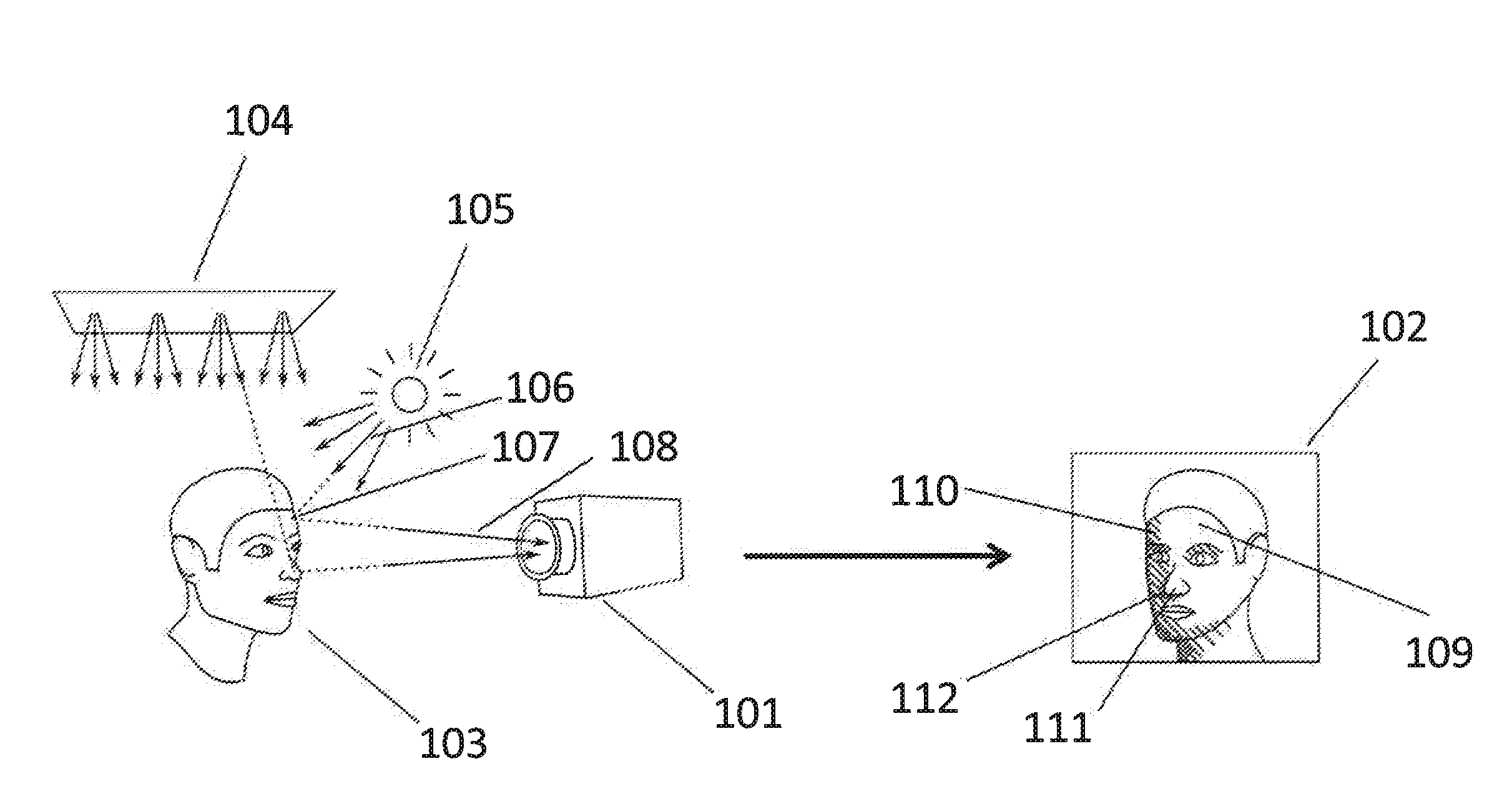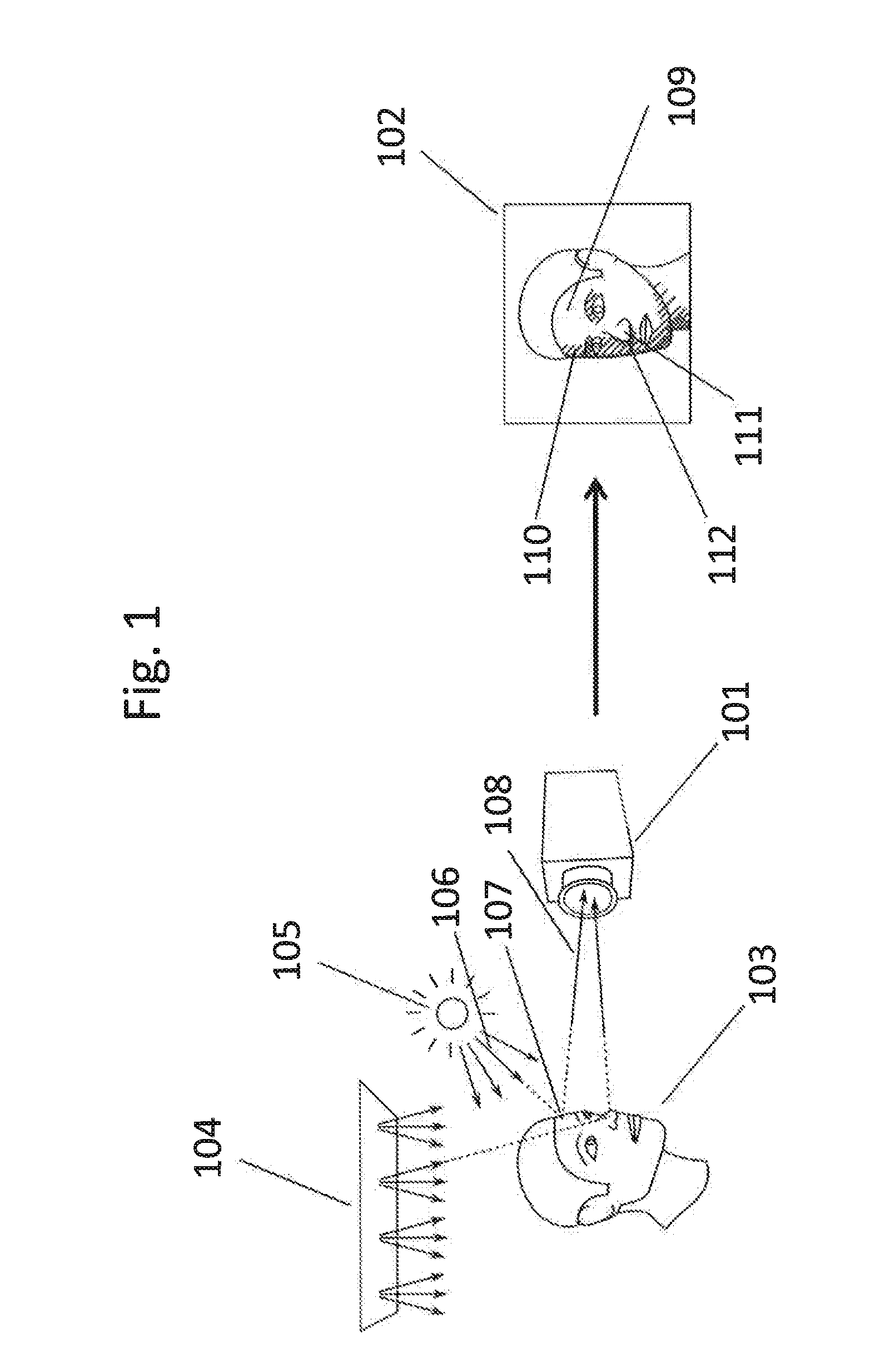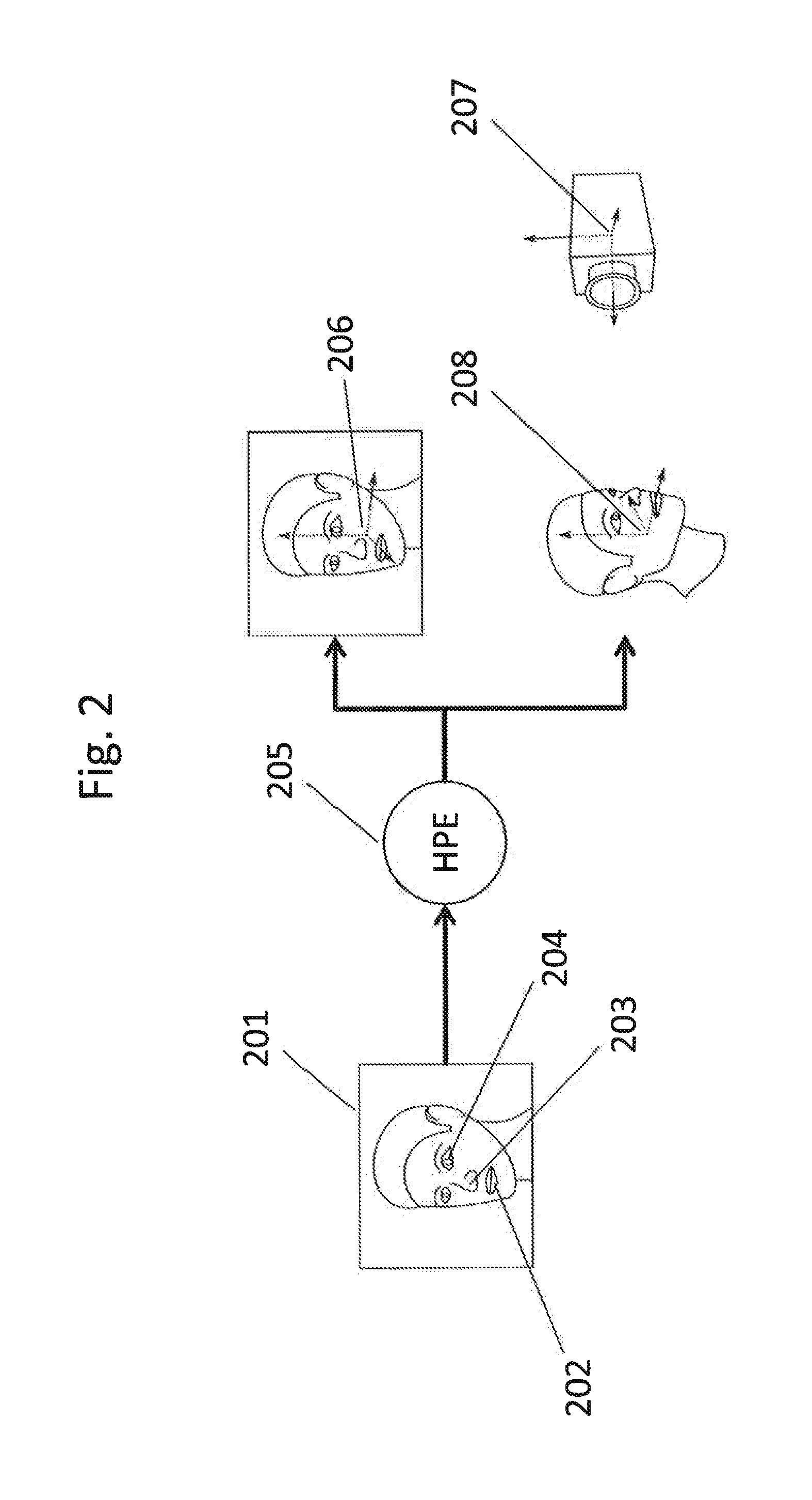Method and system for representing a virtual object in a view of a real environment
a virtual object and environment technology, applied in the field of methods and systems for representing virtual objects in the view of the real environment, can solve the problems of limiting the applicability of these approaches, affecting the reliability of the simulation, and unable to have consistent lighting for the real and virtual objects, so as to achieve the effect of robust simulation
- Summary
- Abstract
- Description
- Claims
- Application Information
AI Technical Summary
Benefits of technology
Problems solved by technology
Method used
Image
Examples
example
[0164]When the user is facing the mobile device (e.g., smartphone) and thereby moves or tilts the camera around, the movement of the head and the movement of the camera should be distinguished in order to integrate multiple measurements into a common “world coordinate system” and using them together to estimate the illumination.
[0165]A possible embodiment of the invention comprises a use of additional active light (photo light / flash or may be light from a screen) to artificially illuminate the face of the user in order to overcome limitations in albedo estimation. The image intensity / color does not only depend on the amount of light falling on the face, but also on the skin color / reflectance properties of the particular skin. By taking an image with added synthetic photo light and one without, the difference between the two images is the face just illuminated by the synthetic light. If we know intensity / light color of this light, we can deduct information about the surface reflectan...
PUM
 Login to View More
Login to View More Abstract
Description
Claims
Application Information
 Login to View More
Login to View More - R&D
- Intellectual Property
- Life Sciences
- Materials
- Tech Scout
- Unparalleled Data Quality
- Higher Quality Content
- 60% Fewer Hallucinations
Browse by: Latest US Patents, China's latest patents, Technical Efficacy Thesaurus, Application Domain, Technology Topic, Popular Technical Reports.
© 2025 PatSnap. All rights reserved.Legal|Privacy policy|Modern Slavery Act Transparency Statement|Sitemap|About US| Contact US: help@patsnap.com



